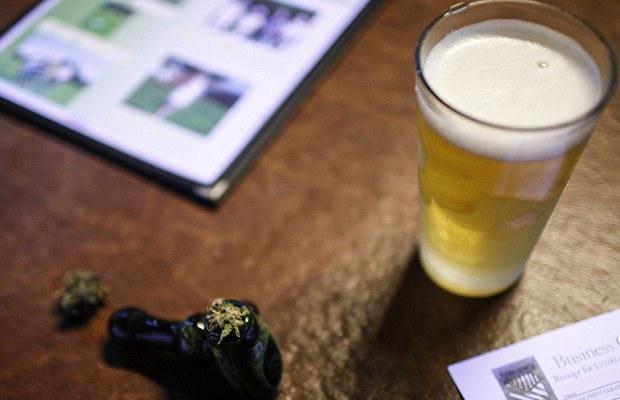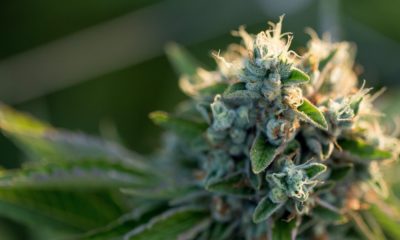In History
Latest Research Finds Pot Is 114 Times Safer than Booze
Getting stoned is the safest way to unwind after a long day at the office according to a new study that has determined that marijuana is the most harmless of all recreational drugs, especially when compared with America’s socially acceptable social lubricant – alcohol.
The latest research, which was published in a recent issue of Scientific Reports, not only finds that cannabis is 114 times safer than booze, but also indicates that previous research over the risks associated with the consumption of alcoholic beverages may have been grossly undershot. In fact, the research completely annihilates the longtime argument that pot remains illegal due to public health concerns.
Just last year, the White House issued a statement in response to a feature in the New York Times demanding the federal government repeal prohibition.
“The editorial team failed to mention a cascade of public health problems associated with the increased availability of marijuana,” the statement reads, continuing that Times article “ignores the science and fails to address public health problems associated with increased marijuana use.”
However, while the Obama Administration maintains that cannabis is a highly addictive substance and damaging to the development of young brains, the latest results of this drug-safety study finds that joining friends for cocktail hour, a common affair among socialites in the nation’s capital, is more of a detriment to the human condition than even shooting heroin or snorting cocaine.
Not surprisingly, when it came down to assessing the risk factors of various dangerous substances, researchers wrote they were only able to classify one as “high risk” and that was alcohol, followed, of course, by tobacco.
To draw these telling conclusions, researchers set out to examine lethal doses of various drugs and then compare them to the consumption amounts of the average recreational user. This method for quantifying the risks associated with drug use is unique in comparison to other studies, which have traditionally relied on death toll statistics to produce results.
Previous studies, like one conducted back in 2003 by the School of Behavioral and Organizational Science at Claremont Graduate University, cosign for the latest findings, which indicates that even though the results are not groundbreaking, they are at least consistent. A recent article in The Washington Post is wise enough to point out the continued need for studies of this kind in order to show the nation where the real issue of public safety resides.
Lead study authors Dirk W. Lachenmeier and Jurgen Rehm conclude, “the risk of cannabis may have been overestimated in the past,” while “in contrast, the risk of alcohol may have been commonly underestimated.” The scientists recommend that more attention be focused on alcohol and tobacco rather than expending so much energy on efforts to restrict the public from the use of illegal drugs. When it comes to marijuana, researchers “suggest a strict legal regulatory approach rather that the current prohibition approach.”
Unfortunately, while this study will likely do very little to persuade congressional powers to get serious about putting an end, once and for all, to pot prohibition in the United States, it serves as additional artillery in an arsenal of truth that an increasing number of the population is subscribing to with each passing day.
Do you agree with this study? Tell us your opinion in the comments.























